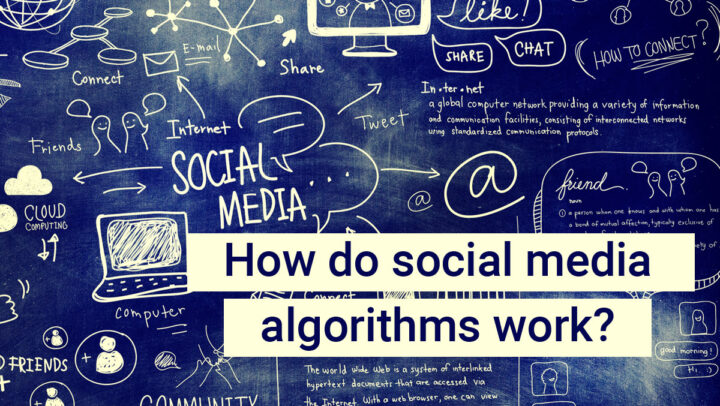Introduction:
In the ever-evolving landscape of social media, one key element that drives engagement and content distribution is social media algorithms. Since social media algorithms are always evolving, it is challenging for marketers to stay current. Although it is impossible to know every aspect of each change, we have a good understanding. The algorithm in use determines how you rank in social media advertisements and where your material appears on a user’s news feed. As an SEO expert and senior copywriter fluent in English, I understand the significance of crafting high-quality content that can surpass competitors. In this article, We’ll examine the algorithms used by Twitter, LinkedIn, Pinterest, Facebook, Instagram, and TikTok.
Understanding Social Media Algorithms
The Basics of Algorithmic Sorting
Social media platforms employ algorithms to organize and display content for their users. These algorithms analyze various factors to determine the relevance, popularity, and engagement potential of a post. The goal is to provide users with a personalized and engaging experience while maximizing the platform’s advertising revenue.
Key Factors Influencing Algorithmic Decisions
- Engagement Metrics:
Social media algorithms prioritize content with high engagement metrics, such as likes, shares, comments, and saves. These interaction indicators reflect that the content resonates with users, generating genuine interest and sparking meaningful interactions.
- User Preferences:
To curate an effective social media marketing strategy, it is crucial to understand the algorithms that analyze a user’s behavior. This analysis includes studying user interactions, interests, and past engagements. By comprehending what users seek, platforms can present content that aligns precisely with their preferences, thus elevating user satisfaction and retention rates.
- Relevance:
Social media algorithms consider the relevance of content to users’ interests, demographics, and locations. Delivering personalized content enhances the user experience, fostering a sense of connection with the brand or business.
- Freshness:
Timeliness is a vital aspect of algorithmic sorting in social media marketing strategies. To ensure users receive the latest information and news, platforms prioritize recent and up-to-date content. As businesses engage in PPC marketing campaigns and B2B social media marketing, sharing fresh and relevant content becomes essential to maintaining user interest and retaining an active audience.
- Content-Type:
Various social media platforms have distinct core features that guide their content prioritization processes. For instance, visual platforms like Instagram emphasize images and videos, while text-based platforms like Twitter concentrate on concise and engaging text content.
- Influencer Impact:
Influencers and high-profile accounts possess significant sway over algorithmic decisions. Their content often enjoys more visibility and reaches a broader audience due to their massive following and high engagement rates.
Algorithmic Variations Across Platforms
Facebook Algorithm
Facebook‘s algorithm aims to deliver meaningful content to its users’ feeds. It emphasizes posts from friends and family while also considering individual interests. The algorithm rewards engaging content that sparks conversations and interactions.
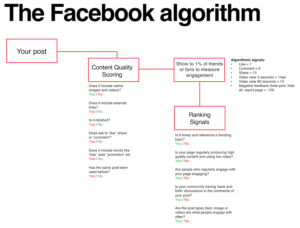
Instagram Algorithm
Instagram‘s algorithm focuses on personalized content based on user interests, relationships with accounts, and engagement history. The algorithm assesses various factors, such as relevance, recency, engagement, and the likelihood of interaction
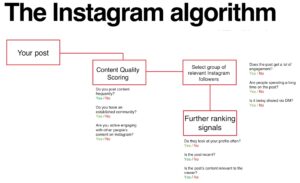
Twitter Algorithm
Twitter‘s algorithm strives to display the most relevant tweets to users. It relies on various signals, including tweet engagement, recency, and user preferences. Twitter also offers users the option to switch between algorithmic and chronological timelines.
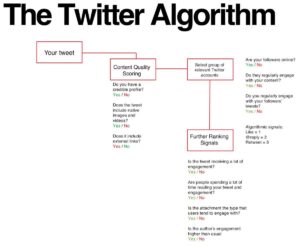
YouTube Algorithm
YouTube’s algorithm maximizes user engagement by recommending videos tailored to individual preferences. It analyzes factors like watch time, likes, dislikes, and audience retention to curate personalized video suggestions.
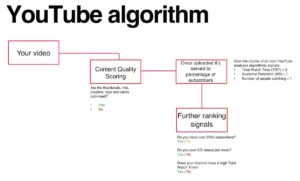
Strategies to Optimize for Social Media Algorithms
- Create Compelling and Relevant Content
Craft high-quality, informative, and engaging content that resonates with your target audience. By providing value and addressing their interests, you increase the likelihood of generating higher engagement metrics.
- Encourage User Engagement
Spark conversations, ask questions, and prompt users to interact with your content. The more engagement your posts receive, the more likely they are to appear on users’ feeds and reach a wider audience.
- Utilize Multimedia Content
Diversify your content by incorporating a mix of images, videos, and text-based posts. Different platforms prioritize various content types, so adapting to their preferences can enhance your visibility and engagement.
- Consistency and Timeliness
Regularly publish content to maintain a consistent presence. Stay updated with the latest trends and news in your industry to provide timely and relevant information to your audience.
5. Collaborate with Influencers
Partnering with influencers or high-profile accounts can amplify your reach and increase the chances of your content being seen by a larger audience. Their engagement rates and follower base can significantly impact algorithmic decisions.
- Analyze and Optimize
Monitor your content’s performance using the analytics tools provided by each social media platform. Analyze engagement metrics, demographics, and user behaviour to identify patterns and optimize your content strategy accordingly.
Conclusion
Understanding how social media algorithms work is essential for crafting content that gains visibility and engages users effectively. By tailoring your content to algorithmic preferences, you can increase your chances of ranking high in search results and reaching a broader audience. Remember, the key lies in creating compelling, relevant, and engaging content that resonates with your target audience. So, embrace the power of social media algorithms, leverage their potential, and position yourself as a frontrunner in the digital landscape.

